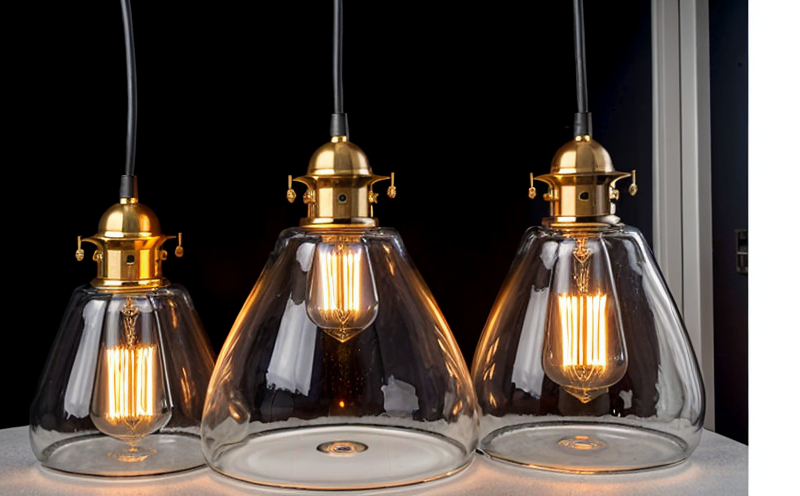Verifying compliance with safety standards for lighting devices with glass components (e.g., UL 8750).
Ensuring Safety Standards for Lighting Devices with Glass Components Why Compliance Matters
In the world of lighting technology, innovation and efficiency are key drivers for manufacturers. However, ensuring that products meet stringent safety standards is a crucial aspect of the development process. This is especially true for lighting devices featuring glass components, which require specific testing to guarantee compliance with regulations.
At Eurolab, our team specializes in providing laboratory services tailored to help businesses verify compliance with critical safety standards like UL This comprehensive guide will delve into the importance of adhering to these standards and highlight the benefits of partnering with a trusted service provider like Eurolab for your testing needs.
The Significance of Compliance
Lighting devices incorporating glass components must undergo rigorous testing to ensure they meet specific safety requirements, such as those outlined in UL This standard focuses on the design and construction of luminaires intended for use in ordinary indoor locations, including ceiling-suspended and pendant fixtures.
Compliance with these standards is crucial for several reasons
Safety Meeting regulatory requirements protects consumers from potential hazards associated with electrical products.
Reputation Demonstrating adherence to safety standards enhances a companys reputation and credibility within the industry.
Market Access Compliance with UL 8750 can facilitate international trade by ensuring that products meet regional regulations.
The Benefits of Working with Eurolab
Our laboratory services are specifically designed to help businesses navigate complex testing requirements and ensure compliance with critical safety standards like UL By partnering with us, you can expect
Comprehensive Testing Our team conducts thorough evaluations of your lighting devices, including glass component analysis.
Expert Guidance Our experienced technicians provide valuable insights into the testing process, ensuring that you understand the results and any necessary improvements.
Customized Solutions We tailor our services to meet the unique needs of each client, providing flexible scheduling and streamlined communication.
Key benefits of working with Eurolab include
Enhanced Product Safety By verifying compliance with UL 8750, businesses can ensure that their lighting devices meet rigorous safety standards.
Streamlined Regulatory Compliance Our services simplify the testing process, reducing administrative burdens and costs associated with non-compliance.
Competitive Advantage Demonstrating adherence to safety standards can differentiate your company from competitors and enhance market credibility.
QA Understanding Verifying Compliance with Safety Standards for Lighting Devices with Glass Components (e.g., UL 8750)
Q What is the purpose of testing for UL 8750 compliance?
A The primary goal of testing for UL 8750 compliance is to ensure that lighting devices featuring glass components meet specific safety requirements, protecting consumers and facilitating international trade.
Q How does Eurolabs laboratory service support businesses in achieving compliance with UL 8750?
A Our team conducts comprehensive testing, provides expert guidance, and offers customized solutions tailored to each clients needs, ensuring a streamlined and efficient testing process.
Q What are the key differences between Eurolabs services and those of other laboratory providers?
A At Eurolab, we prioritize flexibility, expertise, and customer satisfaction. Our team takes the time to understand your unique requirements and provides transparent communication throughout the testing process.
Q Can I schedule a consultation with a Eurolab representative to discuss my specific needs?
A Yes! We would be happy to arrange a consultation to discuss how our services can support your business goals and ensure compliance with critical safety standards like UL
By understanding the importance of verifying compliance with safety standards for lighting devices with glass components (e.g., UL 8750) and partnering with a trusted service provider like Eurolab, businesses can not only protect their customers but also gain a competitive edge in the market.
-
Testing lighting devices for resistance to glass breakage under various conditions.
-
Evaluating the durability and toughness of glass used in lighting devices, such as bulbs and fixtures.
-
Testing for breakage due to mechanical shock, impact, or stress.
-
Simulating scenarios where lighting devices are dropped or subjected to external forces.
-
Assessing the performance of glass components, such as lampshades or covers, when exposed to impacts.
-
Testing for cracks or fractures in glass as a result of thermal shock or rapid temperature changes.
-
Testing the fragility of glass used in outdoor lighting devices, especially for street lamps and floodlights.
-
Assessing the structural integrity of glass under extreme weather conditions such as hail or heavy winds.
-
Testing for breakage or deformation of glass components in safety-critical lighting systems, such as emergency lights.
-
Evaluating the safety of glass in lighting devices to ensure it does not pose a hazard if broken.
-
Testing the resistance of glass in light bulbs to vibration, handling, and transportation.
-
Verifying that lighting systems with glass components are safe for use in public areas where breakage could be dangerous.
-
Assessing the impact of glass breakage on the overall functionality of the lighting system.
-
Testing for the sharpness of broken glass edges to reduce the risk of injury.
-
Verifying the integrity of glass in sealed lighting systems, preventing moisture or dirt ingress.
-
Assessing how glass breakage affects the light output or performance of the device.
-
Testing for glass breakage resistance in energy-efficient lighting systems like LEDs.
-
Verifying the robustness of glass components in decorative or architectural lighting.
-
Evaluating the use of alternative materials like plastic or polycarbonate in place of glass for breakage resistance.
-
Testing for ease of glass replacement or repair in lighting fixtures.
-
Ensuring that the lighting device's glass does not shatter into dangerous fragments when impacted.




